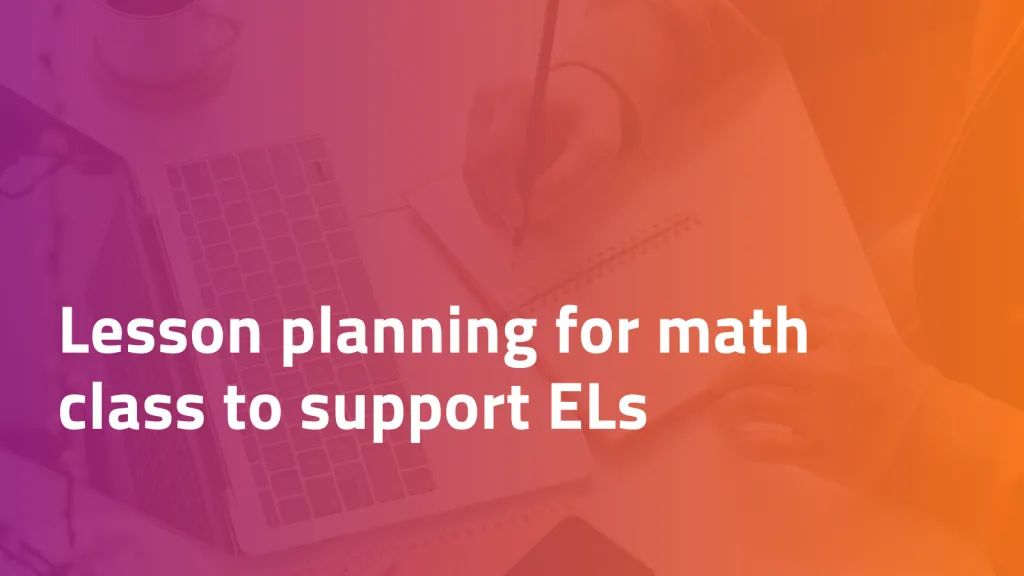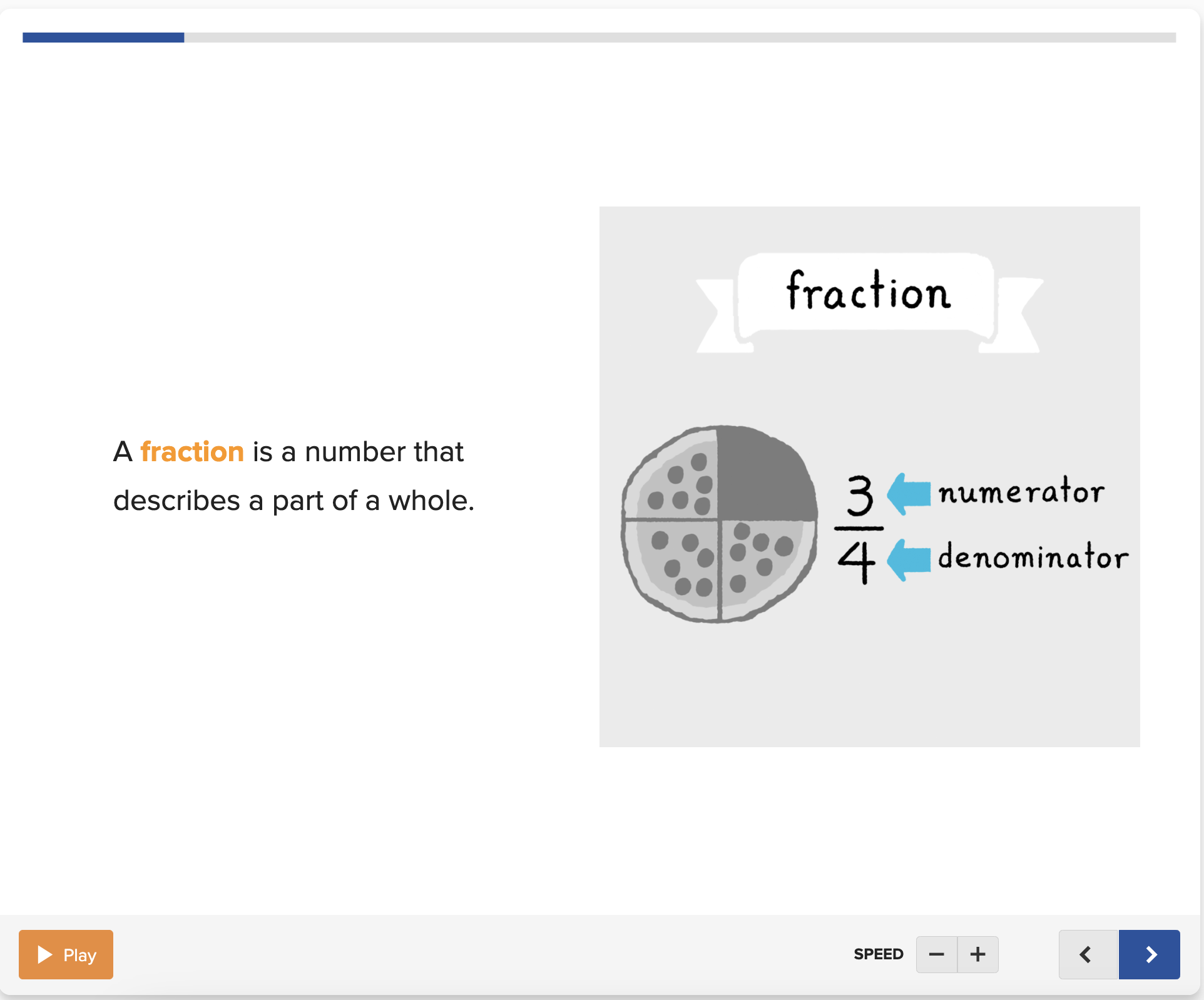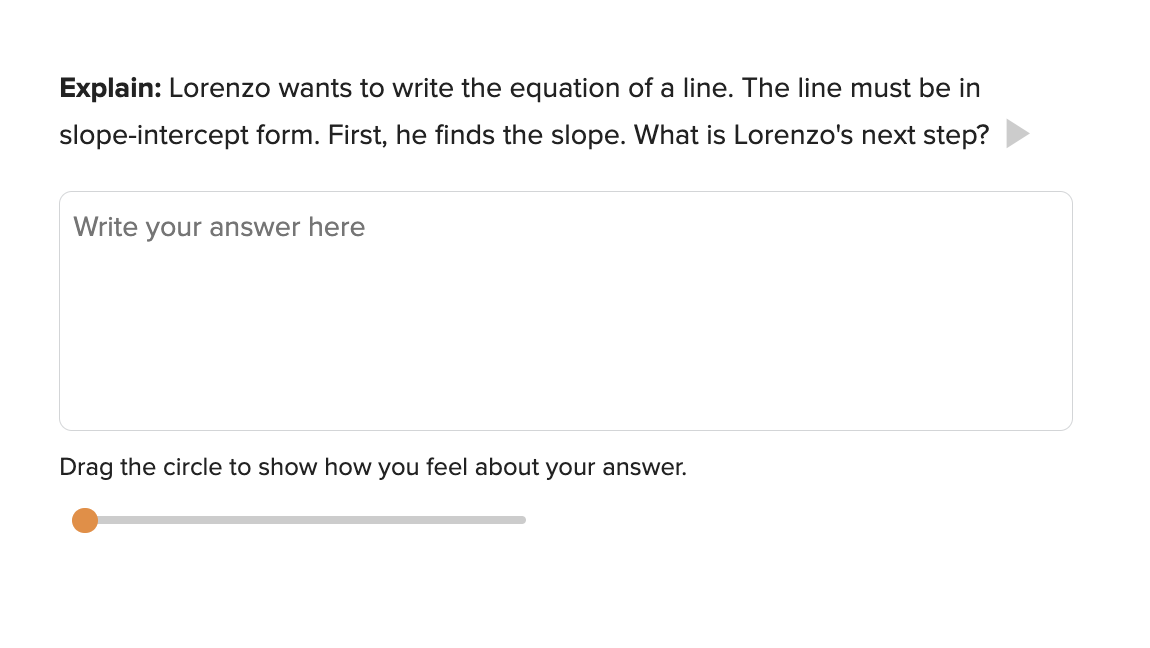Lesson planning for math class to support ELs


Lesson planning for math class to support ELs
Math instruction and assessments are moving increasingly away from memorization and towards a language-centric approach focusing on real-world application. For ELs, this presents an opportunity gap in the classroom where English proficiency frequently acts as a barrier to participation and concept mastery. The way educators structure their lessons and consistently plan for language support is one of the most powerful tools for promoting equity in math.
We’re sharing four ways to make math concepts accessible, scaffold instruction, and tips for creating a positive learning environment for all students - all baked into the planning process.
Specify language objectives alongside your content objectives
When creating your daily lesson plan, always include specific language objectives that complement the content objective you want students to master. Language objectives should include one or more of the four main language domains: reading, writing, speaking, and listening.
Example:
Content Objective: Students can solve equations using the distributive property
Language Objective: Students are going to write a justification for each step that they do in the solution process.
It’s important for your ELs to have the opportunity to practice language and apply it to the math content, and by including the specific objective in your plan, you know exactly how you will check on student language growth and understanding.
Begin lessons with activating background knowledge
ELs better understand and apply language when it is built in a rich, meaningful context. Activating background knowledge allows English learners to connect new content with their cultural experiences, making it more relevant and meaningful to them. This connection helps foster a sense of belonging and cultural identity within the classroom. Real world examples and existing knowledge that connect to more abstract concepts in math are particularly critical for language learners for enhancing comprehension. For example, try beginning a lesson on fractions by connecting concepts like “whole” or “part” to slices of a piece of pizza.

It's also important in your planning to think about some common terms that might come up that students have learned before, or procedures that they might have to do that they've done before. So beginning a new lesson on adding fractions by reminding students how they have all successfully added whole numbers to bring the concept of addition to the forefront of their minds, and then connecting this process by how it is similar to the new lesson. You can also activate their background knowledge through re-using the previous example of a pizza as whole and part and building onto it with the new content.
Prepare ELs with necessary academic vocabulary
When planning math instruction, always consider all academic vocabulary that will be necessary to fully understand the lesson, and prepare ways to introduce the vocabulary prior to the lesson. Academic vocabulary is often more complex and specialized than everyday language. English learners need to be familiar with this vocabulary to understand and engage with academic materials, such as textbooks, lectures, and assignments. When English learners are familiar with the key terms and concepts related to a particular subject, they can better understand the content being taught and actively engage in the learning process.
There are a number of ways you can incorporate this practice into your math lesson plans.
- Have students pre-rate their familiarity with the academic vocabulary at the beginning of the lesson - on a scale of 1-5, how confident are they that they could define the word or use it in context? Then at the end of the lesson, they can do the same activity and see how much they’ve learned and where they may need additional practice. If you use collect the pre-rating activities before the lesson, you can use the data to inform how much time you spend on each vocabulary concept.

- You can also prepare concept bundles. For a math concept, like graphing linear equations, you can introduce key vocabulary such as slope, y-intercept, equal sign, etc. in context prior to beginning the lesson. Each vocabulary word and its definition and a visual aid can go on a slip of paper and all are stored in an envelope that is hung on a bulletin board in class. Then, students can reference it as needed throughout the unit.
- Introduce new vocabulary with a visual anchor. Consistency is key for language learners, and by using the same visuals to explain concepts that will come up frequently, they will feel less overwhelmed by more new information than is necessary. Using a program such as Ellevation Math is the best way to ensure that instruction is cohesive for students while learning academic language. Additionally, students will find these consistencies as they move between classrooms and grade levels, which will again help make connections and improve recall.
- Expand their classroom into their world. A great way to support your language learners is to look through the lesson in advance to pull out visual, interactive concepts in the real world that connect to math terms - for example, a horizontal line.You can connect this with students by showing an image of the horizon and talking about sunsets. If you are teaching about parallel and perpendicular line, try projecting a map of your town that the students live in and spend time using the academic language to describe familiar places, such as first street and second street are parallel, Main Street is perpendicular to those streets and Main Street and First Street intercepting is where their school is.
Incorporate activities and language supports to increase EL engagement
The last step you can include in your lesson planning process to support the ELs in your math classroom is to build in a combination of language supports and opportunities for practicing that language in context (this ties back to your language objective from the beginning of your plan). Language supports include graphic organizers, sentence stems, word banks, reference sheets, and word/concept walls. We cannot ask our multilingual students to learn and speak in English if we do not consistently provide structures to support this.
Finally, we need to plan for structured opportunities for our ELs to practice this language with their peers once they feel comfortable. A few of our favorite activities include:
- I am Monologues, where the student talks from the perspective of a math concept. For example, “I'm a circle, I have a radius, I have a diameter,” which gives them an opportunity to identify with an inanimate object. Then students work in groups to present and guess each other’s concept - this creates an opportunity for students to talk.
- Stronger and Clearer, an activity that focuses on peer editing a draft of student writing with several rounds of giving and receiving feedback and gives students an opportunity to build collaboration skills.
- Confidence questions and writing rich prompts that will elicit rich responses - We design assessments and check-ins that go beyond yes or no answers, and instead push students to write or share what steps they will take to solve a problem, explain how they found their solution, argue their answer, etc.
This blog was written in collaboration with our in-house math instructional expert, Pamela Burgreen. Prior to her current role at Ellevation as Mathematics Content Manager, Pam was a high school math teacher in New York City and Long Island for 10 years. After leaving the classroom, Pam worked on middle and high school math curriculum and assessments before starting with Ellevation in early 2020.